"Space" fleet of the Soviet Union
21 August 1957 of the year was the successful launch of the first Soviet (and first in the world) ballistic missile, the famous “Royal Seven”, which, after minor improvements, became the basic launch vehicle for our satellites and manned spacecraft. Having flown about 8 thousand km, its head part fell in the Far Eastern region of the country. There, the measuring points “accepted” the object and gave the search services the coordinates of its landing. It became clear that with the launch of more powerful systems or modifications, the final stages of the missiles would complete the flight beyond the borders of the country, in the Pacific Ocean. So, to monitor them, you will need to create special "floating laboratories", install the appropriate equipment on them.
The fact that the spacecraft will need the help of ships, experts understood in 1955 year, even before the launch of the first satellite into space, when a ground-based command-and-measuring complex was created. This work was unplanned and was carried out on the initiative of a small group of employees headed by N. Ustinov.
After the flight of the Seven, the creation of a marine measuring complex became one of the top priorities. "Water area" - so the scientists called the research work, the results of which were to be embodied in the courts with measuring equipment. “And not in the future,” its leader G. Tyulin told the performers. - Sergey Pavlovich Korolev tests the newest launch vehicle in the middle of October 1959. So we don’t have time to rock: in 12 months the ships should be in the Pacific ... ”
The creation of measurement techniques using pre-existing ground radio equipment has been successfully advanced. However, stationary points are fixed relative to the surface of the Earth, antennas, guidance programs provide continuous observation of the spacecraft. Another thing on the sea: here a slight pitching of the vessel will cause the antenna to lose the controlled object. And during a storm, no software guidance devices can help. Here it was necessary to develop new methods and means by which the bases of the antennas (platform) could be stabilized, despite rolling.
In order to accurately determine the time and coordinates of the landing objects, it was necessary to supplement the radar and optical tools with sonar. To “bind” all measurement information to a common scale, it was decided to use the “Bamboo” equipment of a single time, which showed itself well in working with the first space satellites. To protect complex measuring instruments from moisture and temperature fluctuations, it was necessary to find effective methods and materials. The main requirement for them was the lack of influence on the accuracy of measurements.
The task of placing various types of radio-technical stations on the ship turned out to be difficult, and in order not to cause mutual interference, they are located on land rather far from each other, sometimes up to several kilometers. If necessary, shielding "incompatible" means on land shields carefully grounded. On ships, of course, there are no such conditions. In addition, the ship's power station cannot provide power to the new equipment, both in terms of power, calculated only for “its” needs, and in terms of current parameters, to which the measuring tools presented special increased requirements.
To these and many other engineering and scientific problems were added purely organizational: the Ministry of Fleet of the USSR every ship in those years was on the account, and to create a floating complex initially they needed at least four (three measuring and one connected). The latter provided reception from the cosmodrome and further retransmission to the other vessels of information on the preparation and launch of the rocket, the estimated time and coordinates for completing its flight, as well as for transmitting the measurement results to the cosmodrome. Communication satellites that now perform these duties did not exist in those years.
In addition, in a number of instances, to put it mildly, the very idea of creating a floating measuring complex did not find support, the timing of its implementation and the possibility of separating vessels for these purposes, which were not enough for “narkhoz transportations”, caused particular doubts. Still, after the stubborn struggle of the head of Aquatoria, four modest dry cargo ships moored to the berths of the Leningrad shipbuilding plant. There all the equipment was concentrated, of course, in the land version, since there was no time left for the development of a special marine variant. It was impossible to place all the equipment in unsuitable for this close quarters and holds, and the designers made a bold and radical decision: leave only the hull and running gear elements from the dry cargo vessels, design the restraints for the new equipment.
Ships managed to prepare in time. In the meantime, the selection and appointment of specialists to the expeditions was completed. After mooring trials started running. In order to save time, checks of measuring instruments for aircraft were combined with them.
Finally, it was necessary to solve the problem, which way to go to the place of work - to the Pacific Ocean. There were three options: one, with a length of about 23 thousand km, passed through the Suez Canal, the second, 29,4 thousand km, around Africa and the third, the shortest, but also the most difficult, - the Northern Sea Route.
N.S. Khrushchev ordered the expedition to be sent along the northern route - houses and walls help. As a result, it was necessary to hastily strengthen the hulls of the ships with ice reinforcements. Icebreakers were prepared for piloting flotilla»And aircraft for proactive intelligence of the most difficult sections of the route. The route was covered in less than a month. Difficult ice and weather conditions, other difficulties of the transition did not prevent to complete the task.
On the way, the testers mastered the new technique, conducted private and comprehensive training. In the settlement area of the waters of the court came exactly at the appointed time. Despite the storm, the first work was very successful, as, indeed, all subsequent ones. A few years later, the Pacific Expedition, as the first group of floating measuring instruments began to be called, was replenished with new ships, including the most sophisticated of them - “Marshal Nedelin.”
The preparation for manned space flight and the launch of automatic interplanetary stations (AMS) required the expansion of the scope of the Pacific expedition. Calculations have shown that in order to land the descent vehicles in the designated flat area of the country, the braking of spacecraft should be carried out over the waters of the Atlantic Ocean. Approximately here the launches of the AMS from the orbit of artificial earth satellites (AES) to the flight routes, for example, to Venus and Mars, were scheduled. To ensure control over these most critical stages of space flight - the final for manned spacecraft and the initial one for AMC, measuring instruments needed to be sent to the waters of the Atlantic Ocean and the Mediterranean Sea.
It would seem, what are the difficulties for the transfer of pre-existing ships from the Pacific? Calculations of ballistics and sailors rejected such a question. To ensure reliable flight control of an increasing number of spacecraft, measuring equipment is needed simultaneously in both the Pacific and the Atlantic Ocean, and the transfer to and from ships “back and forth” was not economically feasible. Therefore, using the "Pacific" experience, the above-mentioned research institute organized the creation of another group, similar to the Pacific, on the basis of three motor ships - Ilyichevsk, Krasnodar and Dolinsk. Telemetry stations, a unified time instrument and autonomous power supply sources on ships were served by small, 8-10 people, expeditions from specialists of the same scientific research institute and measuring points of the land KIK.
With the increase in the number of spacecraft in near-earth and interplanetary orbits, the work of testers at sea increased. Sometimes there was not enough time even to call at African ports to replenish ship stocks, especially fuel. The tanker Aksai came to the aid of the “Atlantic triad” of ships in October 1962. In order to increase the efficiency of the use of expensive ship time on long-haul flights, a telemetry station was mounted on board the tanker, which employed the smallest expedition in the entire “star flotilla” - of six people. In 1965-1966 new vessels, “Bezhitsa” and “Ristna”, replaced the veterans of the flotilla. They were equipped with new equipment, including powerful radio transmitters, which securely communicated with the Center.
In 1967, the “space flotilla” was transferred to the jurisdiction of the Space Research Service of the Department of Maritime Expeditionary Work of the USSR Academy of Sciences. From the middle of 1951 to 1986, until the last days of his life, the famous Arctic explorer I. Papanin stood at the head of this department.
The expansion of research and the use of space has led to the improvement of floating command-and-measuring equipment, which, over time, began to be placed not on converted dry-cargo ships, but on specially designed new ships. Their firstborn was a research vessel (NIS) "Cosmonaut Vladimir Komarov", or "KVK", as the testers called it for brevity on the screens and scoreboards at the Mission Control Center (MCC). According to the number of employees, the scientific expedition on the KVK exceeded by seven times the one that was on the largest ship of the first generation - the Dolinsk. Only this comparison makes it possible to imagine the superiority of the new NIS over the previous vessels in terms of equipment saturation and scientific potential.
The second in the new generation was the vessel "Akademik Sergey Korolev". For him for the first time, the entire measuring equipment was made in the marine version. According to its characteristics, ASK exceeded all previous vessels.
The pinnacle of "space shipbuilding" was the flagship of the flotilla - "Cosmonaut Yuri Gagarin." It was equipped with a set of technical systems that allow testers to fully perform with all the spacecraft the entire scope of work available to the most up-to-date stationary research and measurement center. The range, reliability of reception and transmission of all types of information provided powerful transmitting and highly sensitive receiving devices with parametric amplifiers, which were cooled with liquid helium, produced immediately on the ship. The mirrors of transmit-receive antennas operating extremely broadly in a wide range of frequencies had diameters 12 and 25 m (mass of antenna devices 180 and 240 t, respectively). Operators centrally controlled all command-and-control devices and heavyweight antennas. For this, as well as for processing the measurement results on the "SGC" there were high-performance computers. The vessel, with a displacement of 45000 t (for comparison, the aircraft carrier Admiral of the Fleet of the Soviet Union Kuznetsov has a displacement of 43000 t, and the cruiser Peter the Great - 23750 t) had excellent navigability. It could be used in all areas of the World Ocean, including the polar (for this, the hull was reinforced with ice reinforcements). The “KUG” had a special damper, reducing the rolling motion of the 7-point storm more than three times. The vessel had quite comfortable conditions for work and leisure. All 86 laboratories and 210 cabins had air conditioning systems. And it is on the ship 1971 of the year! Also on board were passenger and freight elevators, lounges, a gym, swimming pools, a library, a cinema, and first-class medical equipment in a cozy hospital.
In 1975-1977 veterans of the flotilla Dolinsk, Bezhitsa and Ristna were returned to the merchant navy. They were replaced in the second half of the seventies by new research liners, named after the cosmonaut heroes P. Belyaev, V. Volkov, G. Dobrovolsky, V. Patsayev. These ships were equipped with more advanced technology than their predecessors, and reliably provided the reception of telemetry and scientific information from any satellites, its transfer to the corresponding "work profile" of satellites of the coordination and computing centers, two-way telephone and telegraph communication with the crews of manned spacecraft and scientific research complexes.
That was the "star fleet" of the Soviet Union. It ended with the collapse of the country. The flagship, Cosmonaut Yuri Gagarin, was taken over by the Ukrainian Ministry of Defense, and was no longer exploited. The ship was based at the port of Yuzhny, near Odessa. In 1996, a unique vessel was given to scrap by the Austrian company Zuid Merkur at a shameful price - 170 $ per ton. Even earlier, the Cosmonaut Vladimir Komarov finished his journey. In 1994, the ship was decommissioned and also sold to scrap Hindus. The sea points "Cosmonaut Vladimir Volkov", "Cosmonaut George Dobrovolsky", "Cosmonaut Pavel Belyaev" stood up in 1992, funny, and in 1994, they were written off.
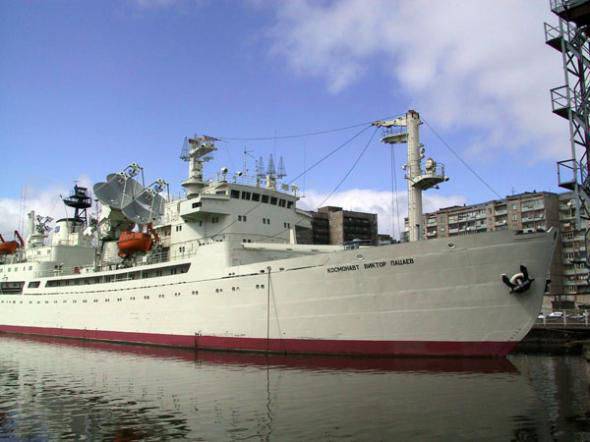
Only the NIS Cosmonaut Viktor Patsayev with a displacement of 9180 tonnes was saved. In 2001, the ship came from St. Petersburg to Kaliningrad, where it was moored from the pier of the World Ocean Museum on the Embankment of the Historical Fleet from 2001. This year the vessel was recognized as a cultural heritage object.
In recent years, Marshal Krylov, the only research vessel providing flight design tests and processing of new types of rocket and space technology, was commissioned on 1987. October 23 The ship was towed to 2015 for repair in one of the ship repair facilities in Vladivostok.
Sources:
Krasnov V., Balabin V. History Research Fleet of the Russian Academy of Sciences. M .: Science, 2005. C. 164-165, 173-183.
Bezborodov V., Zhakov A. Space Service Vessels. M .: Shipbuilding, 1980. C. 28-56.
Pokrovsky B. Star Flotilla // Sea collection. 1994. No.4. C.82-86.
Potekhina A. Ships of the Star Flotilla // Red Star. 03.11.2009.
Kretov V. Samarev I. History of the Space Fleet // Red Star. 22.09.2007.
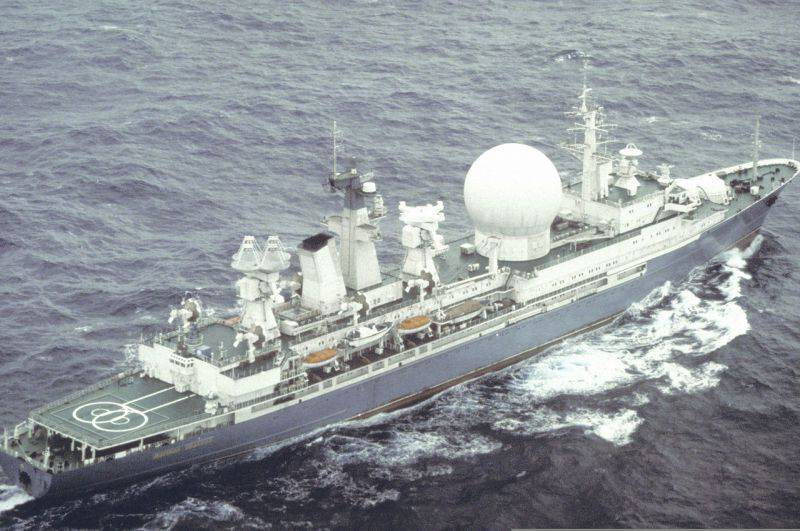
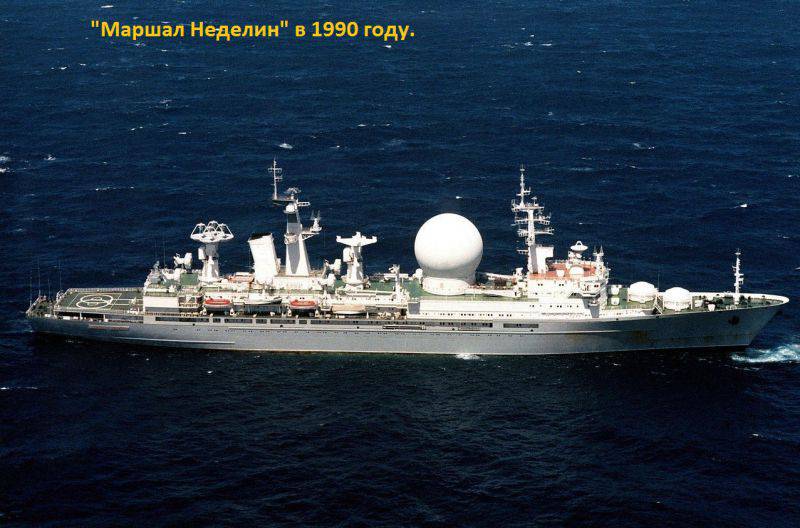
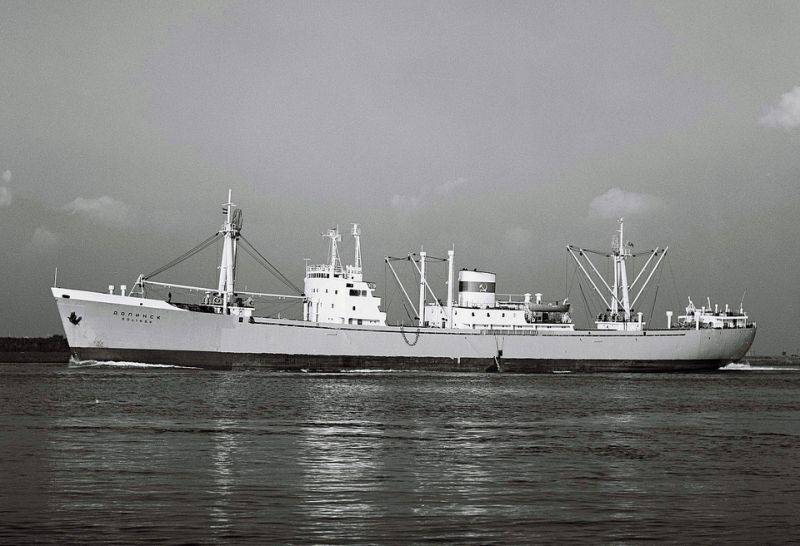
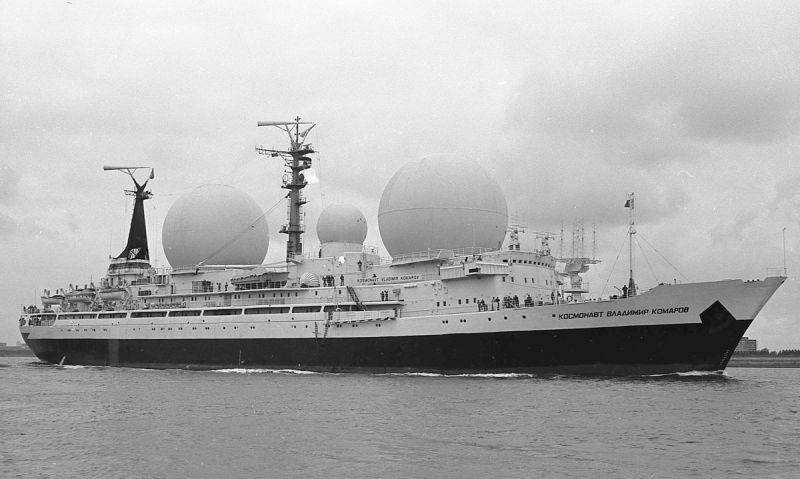
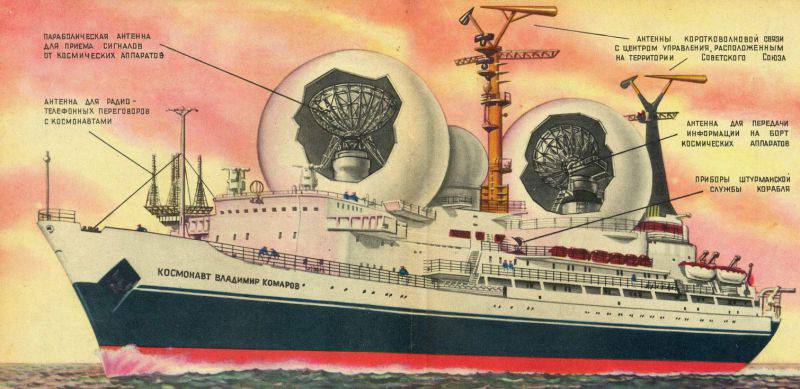
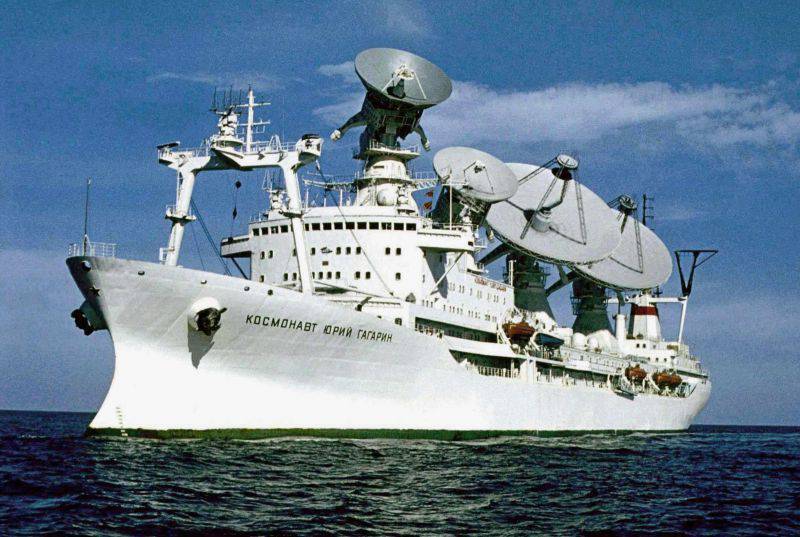
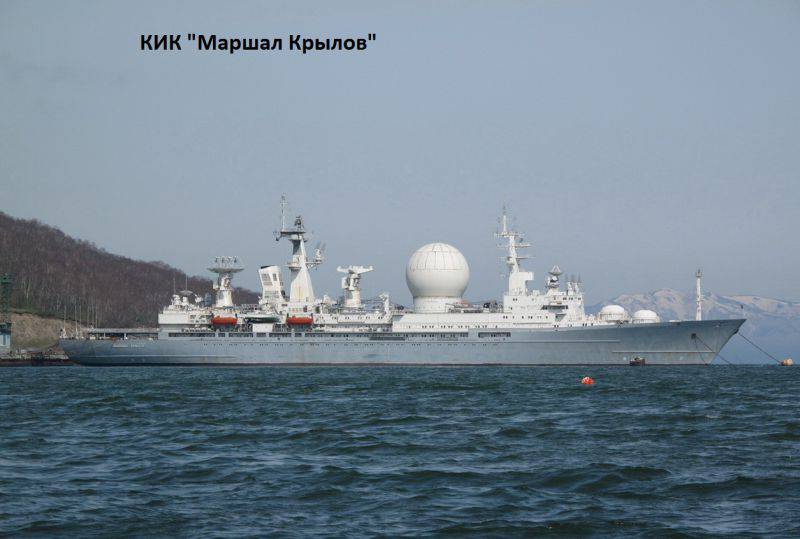
Information